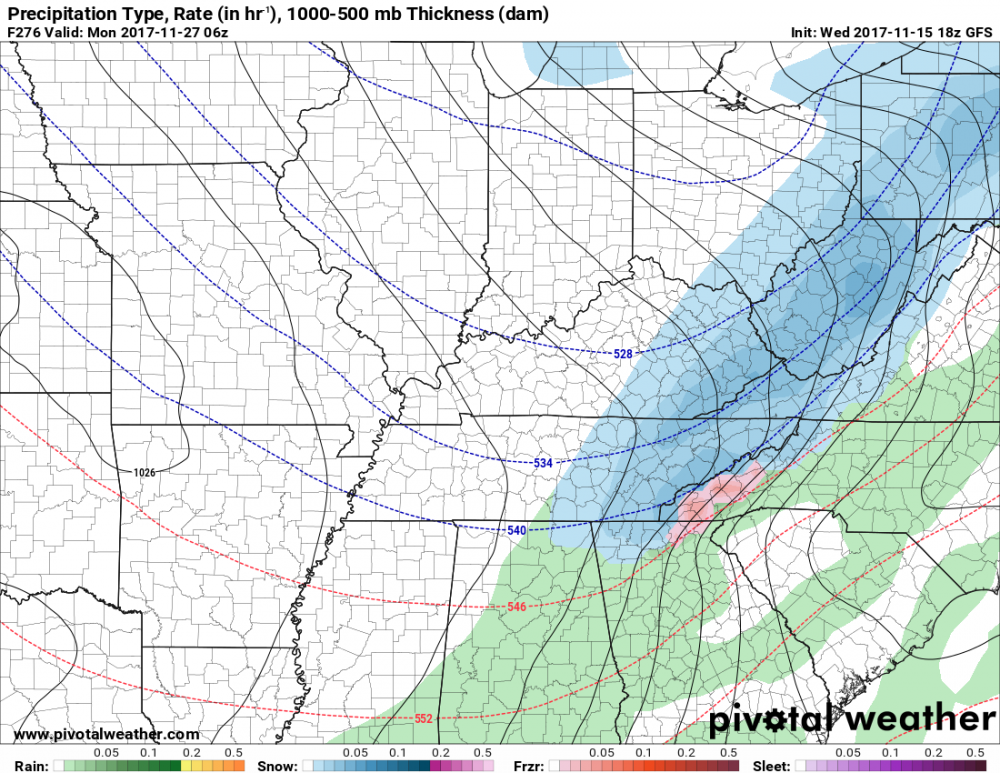-
Hello, please take a minute to check out our awesome content, contributed by the wonderful members of our community. We hope you'll add your own thoughts and opinions by making a free account!
You are using an out of date browser. It may not display this or other websites correctly.
You should upgrade or use an alternative browser.
You should upgrade or use an alternative browser.
Pattern November Knock-Out
- Thread starter ForsythSnow
- Start date
I'm getting snow at 372 on 0z!!!!!
It's happening! Winner winner chicken dinner!
It's happening! Winner winner chicken dinner!
Storm5
Member
The -EPO on the 00z gfs gets me hot and bothered late on this Saturday night ...
Storm5
Member
Holy GEFS, the pattern on the 00z GEFS is SEXY!!! Late night weather porn in November is always a plus
Storm5
Member
Haha yep that's why I posted it . " The December disaster " incoming
Webberweather53
Meteorologist
Larry, it would be an honor to have you start a thread! And most likely bring some good mojo! Fire when ready!
No time for any more dilly dallying. It is about time that the December thread finally be created. In honor of, inspired by, and with permission from Mack, I've just created the December thread, my first monthly here:
http://southernwx.com/community/threads/december-make-analogs-relevant-again.289/
tennessee storm
Member
Just please don’t make it December to remember Cause we know how that would turn out. Big jinx
NorthGaWinter4
Member
12z gfs long range is fun
tennessee storm
Member
its always fun in fantasy land... thats why they call it that... lol12z gfs long range is fun
Hmm... today it's sunny and 60 degrees:


Benn quite the stretch of cold mornings all below 30 since the 23rd
Sent from my SM-G955U using Tapatalk
Sent from my SM-G955U using Tapatalk
Yes it has, plenty of ice scraping....Benn quite the stretch of cold mornings all below 30 since the 23rd
Sent from my SM-G955U using Tapatalk
Sent from my SM-G920V using Tapatalk
No kidding it's been brutal. I was surprised at the 26 this morningYes it has, plenty of ice scraping....
Sent from my SM-G920V using Tapatalk
Sent from my SM-G955U using Tapatalk
Yeah I was too in fact almost late for work, didn't allow time to warm up or scrape the vehicle.... fun driving looking through the little ice hole lolNo kidding it's been brutal. I was surprised at the 26 this morning
Sent from my SM-G955U using Tapatalk
Sent from my SM-G920V using Tapatalk
Bottomed out at 42 at 830 now up to 44 with a little breeze we might miss out on frost tonightYeah I was too in fact almost late for work, didn't allow time to warm up or scrape the vehicle.... fun driving looking through the little ice hole lol
Sent from my SM-G920V using Tapatalk
Sent from my SM-G955U using Tapatalk
With 2 days to go, CHA is sitting at 1.8 AN for temps.. thanks to that insane streak of warm lows in the beginning of the month. We'll end up around 2 degrees AN for the month. With 5 nights below freezing to Nov 2016's 3. Of course, there's a lot of potential for super cold to invade after the first week of Dec this year, unlike last year.
Nov 2010-- 4 nights at freezing or below (strong La Nina)
Nov 2013-- 10 nights at freezing or below (neutral ENSO)
Nov 2014-- 13 nights at freezing or below (very cold Nov that was.. weak El Nino)
These were the last 3 winters in Chattanooga with good cold and snowfall.
Nov 2010-- 4 nights at freezing or below (strong La Nina)
Nov 2013-- 10 nights at freezing or below (neutral ENSO)
Nov 2014-- 13 nights at freezing or below (very cold Nov that was.. weak El Nino)
These were the last 3 winters in Chattanooga with good cold and snowfall.
Last edited:

